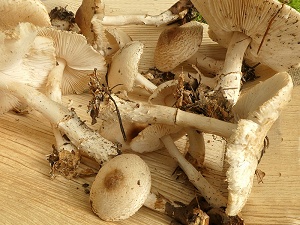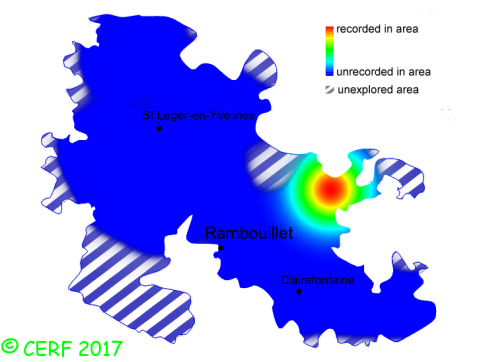| Lepiota ignivolvata Bousset & Joss. ex Joss. |
|
|
|
|
|
|
The cap is orange to chestnut brown at the centre, disrupting into small ochre-cream scales, with a central umbo. The cap surface is scaly, not viscid nor sticky. The stem is with scales or bands under the ring, bulbous, with a membranous ring. the odour is unpleasant; its texture is fibrous. The gills are adnate, crowded . The spore print is white. This species is saprophytic. It grows on the ground, in the woods, on a rather calcareous soil. The fruiting period takes place from July to November.
Chemical tests : none. Distinctive features : stem base becoming pinkish-brown to orange-red when touched (hardly visible); white stem with belt; the ring is more of a reddish ring zone Lepiota ignivolvata is rare and confined in the forest of Rambouillet, and is quite rare, more generally speaking . | ||
|
page updated on 14/01/18

